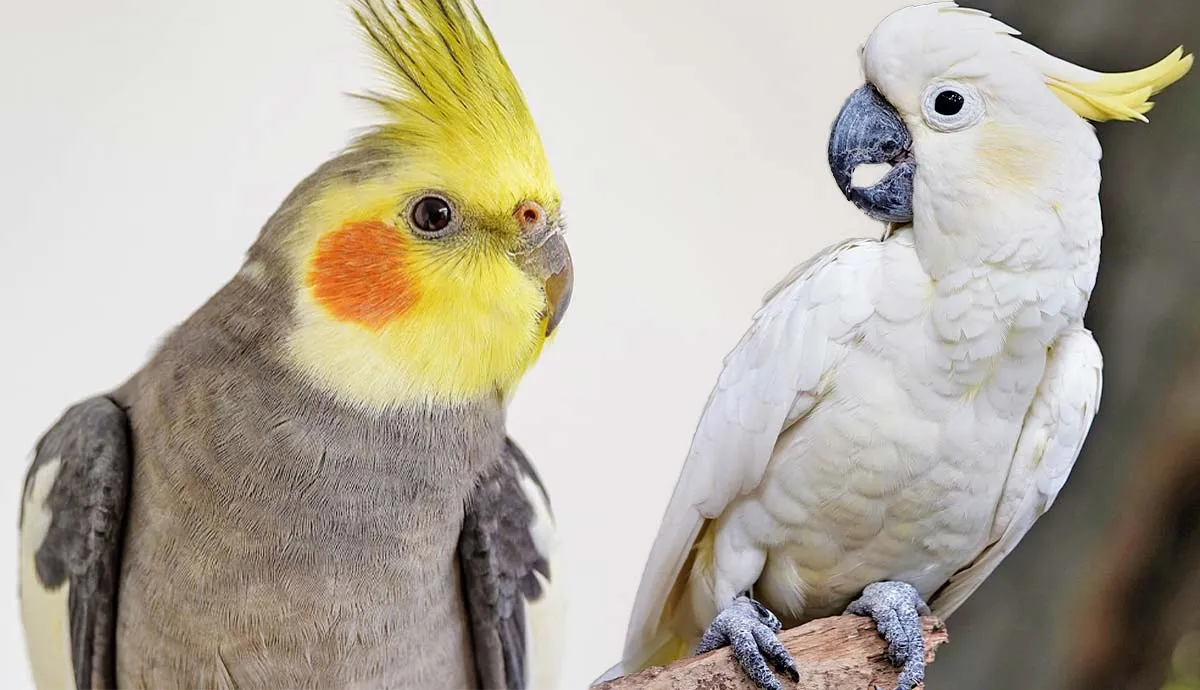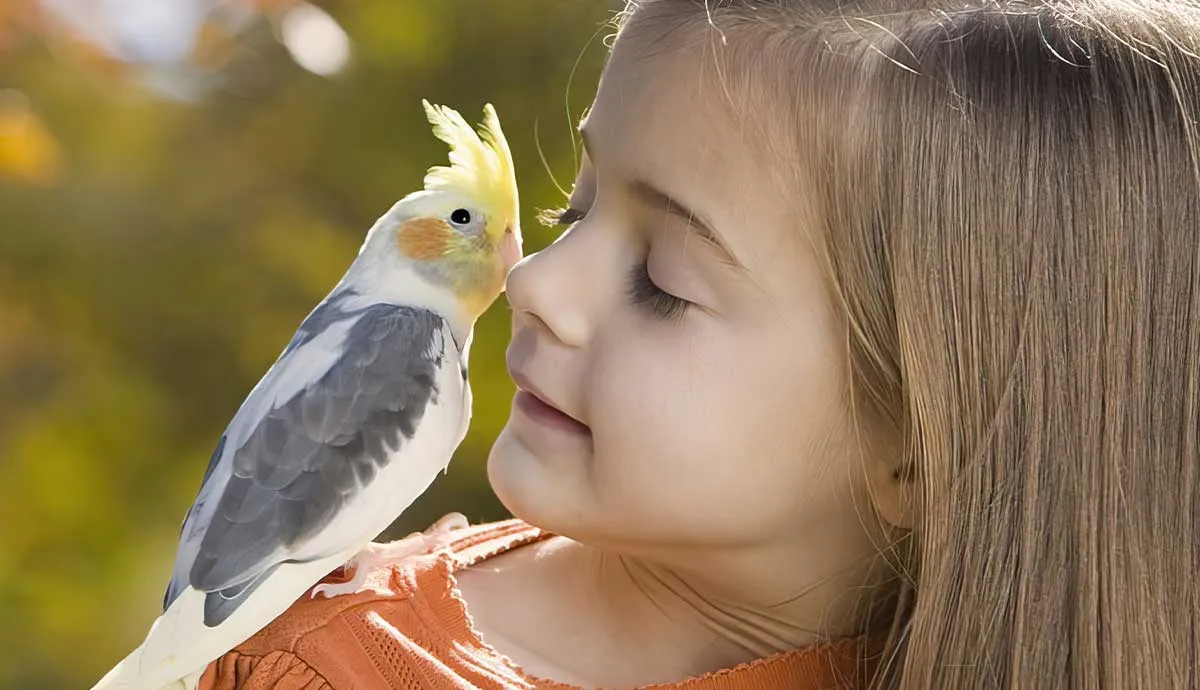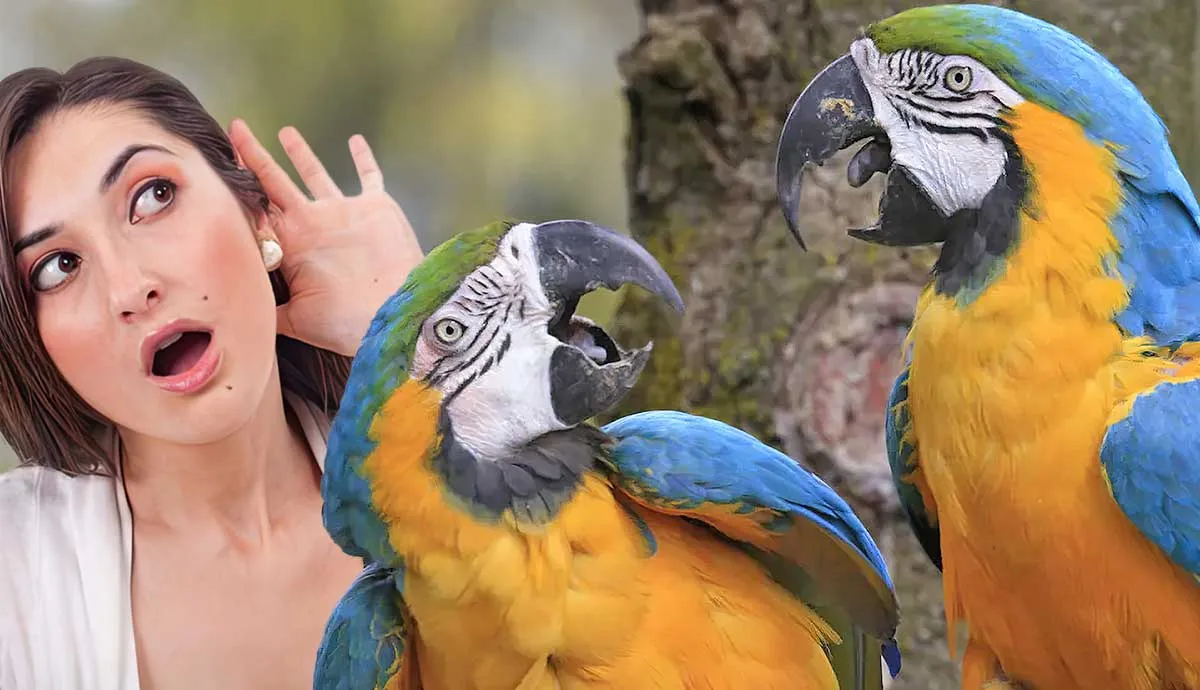Unlike humans, parrots do not have vocal cords, but instead, have an organ called the syrinx. Located in the trachea of the bird, the syrinx can reproduce or imitate almost any sound. Parrots are vocal learners who listen and then mimic their environment. They naturally have the social desire to fit in and also use their vocal abilities to share information with their flock, or in this case, their owners. Here are 5 simple tricks to teach your parrot to talk.
1. Understand Your Parrot
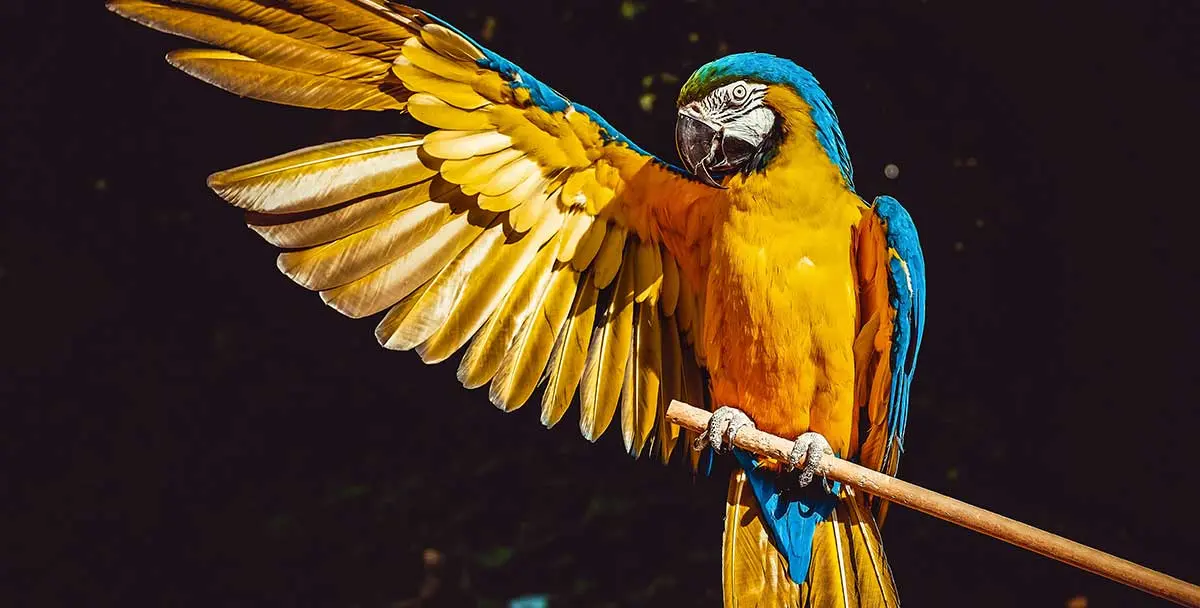
If you want your parrot to talk with you, it’s important to understand what type of parrot you’re engaging with. Breeds like the African Grey Parrot can speak 50-200 words, while Budgerigars typically fall between 120-500 words. Other breeds like Macaws and Cockatoos have significantly less speaking ability, ranging from 10-50 words respectively. Males are also more likely to talk consistently than females. So, it’s important to find out what breed you have and to learn its limitations.
You may also be wondering if parrots know what they’re saying when they communicate with you. The short answer is, unfortunately, no. When a parrot says, “hello,” it doesn’t know that it’s greeting you properly. However, it is attempting to bond with you. Parrots love attention and get very attached to their owners.
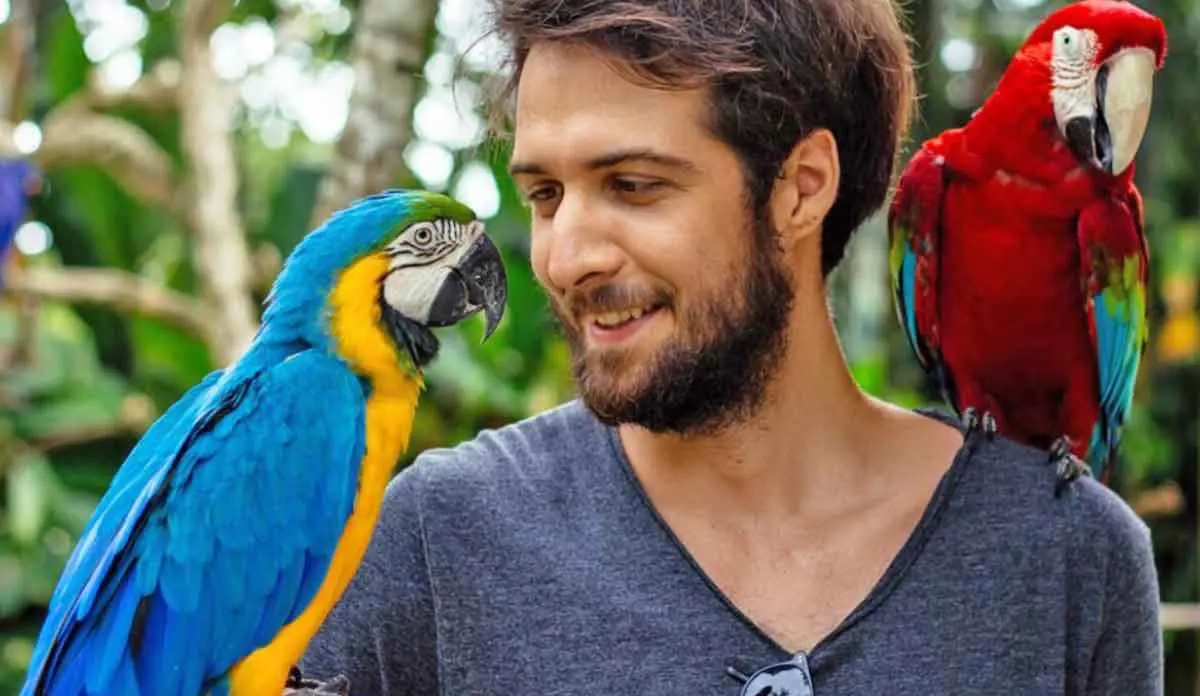
Understanding your parrot's breed-specific capabilities will not only manage your expectations but also help you create an enjoyable learning experience for your talkative companion.
2. Environment Matters
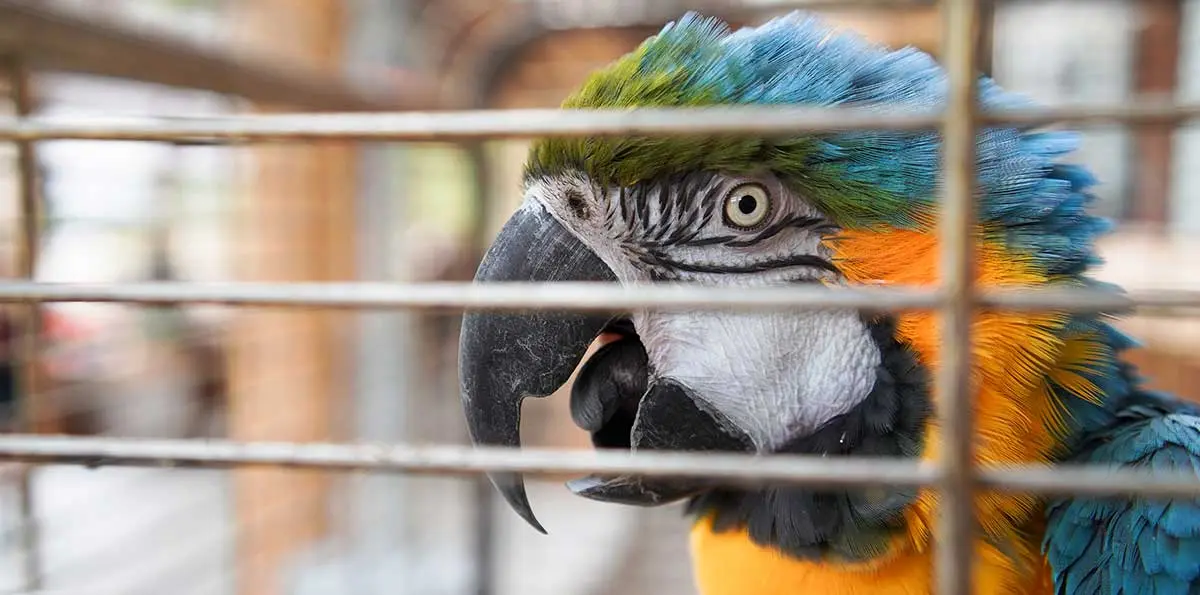
Before you begin training your parrot to talk, you need to create a positive learning environment. Parrots can make wonderful pets, but they do require a healthy amount of care and consideration. To learn properly, they need a positive and stress-free location, full of stimulation. Here are some tips for parrot placement in your home:
- Choose a central location. Parrots need exposure to daily activities and conversation to mimic what’s around them. They are incredibly social animals. However, they can be highly sensitive to loud noises and typically need 10-12 hours of sleep. Any room that provides both interaction and adequate sleep time is ideal.
- Natural light is necessary. Just like humans, birds need natural lighting to thrive. Parrots absorb Vitamin D from lighting and prefer to have 10-12 hours of light regularly. Direct sunlight on the bird’s cage should be avoided, but a room where one can control the amount of sunlight within it is ideal. A dark or dim room can lead to behavioral issues like biting and screaming, and any fluorescent lighting should be switched to UVB bulbs instead.
- Good airflow is key. Birds can easily suffer from respiratory issues, so they need to be kept away from vents and drafts specifically. Good circulation and fresh air are absolutely vital to their health.
Beyond physical location, a patient demeanor also goes a long way to creating a relaxed atmosphere for your parrot to learn. A calm and serene owner will have their feathered friend talking quickly and consistently.
3. Persistent Repetition

Like most things in life, consistency is key. Birds need to hear the same phrases with the same context each time to start mimicking them properly. For example, every time you greet your parrot with “hello” or say “good night” when you cover their cage, they are learning what’s expected from you with each interaction.
Common words and phrases birds learn quickly are:
- Hello / Howdy
- Goodbye
- Come in
- Night night
- Rise and shine
- Love you
- Yum
- Please
- Thank you
Birds learn from each other and consider their family their flock-mates. This means they could start mimicking everything from you to your cell phone with enough repetition!
Find a quiet place and begin speaking simple words and phrases to your parrot. It’s important to note that if a word isn’t repeated enough, they may need to learn it over and over for it to stick. Repetition of each word will be necessary, and short training sessions are best.
4. Positive Reinforcement

While teaching your parrot to talk, positive reinforcement helps immensely. Because parrots are such social creatures, they rely on the attention they receive from their caretakers to truly prosper. Building a strong foundation of trust through positive interactions enhances the learning experience and encourages your parrot to engage in communication.
If your feathered friend begins to vocalize after you say a word, even if it sounds like regular bird chatter, encourage them with a treat, affection, and praise. They will begin to correlate the words you say with the things they want. For example, if you want to train your parrot to say “yum” in context, it will be beneficial to reward them with a treat and then speak that word to them afterward several times over. They will then associate the treat with the word.
Parrots also tend to pick up words and phrases that you say with enthusiasm very easily. Saying words with energy and excitement is more likely to get the desired results sooner. However, this also means you must be careful what you say around a parrot. If they pick up words or phrases that you would prefer they didn’t say, try not to react as it will reinforce the behavior of repeating those words.
5. Interactive Communication
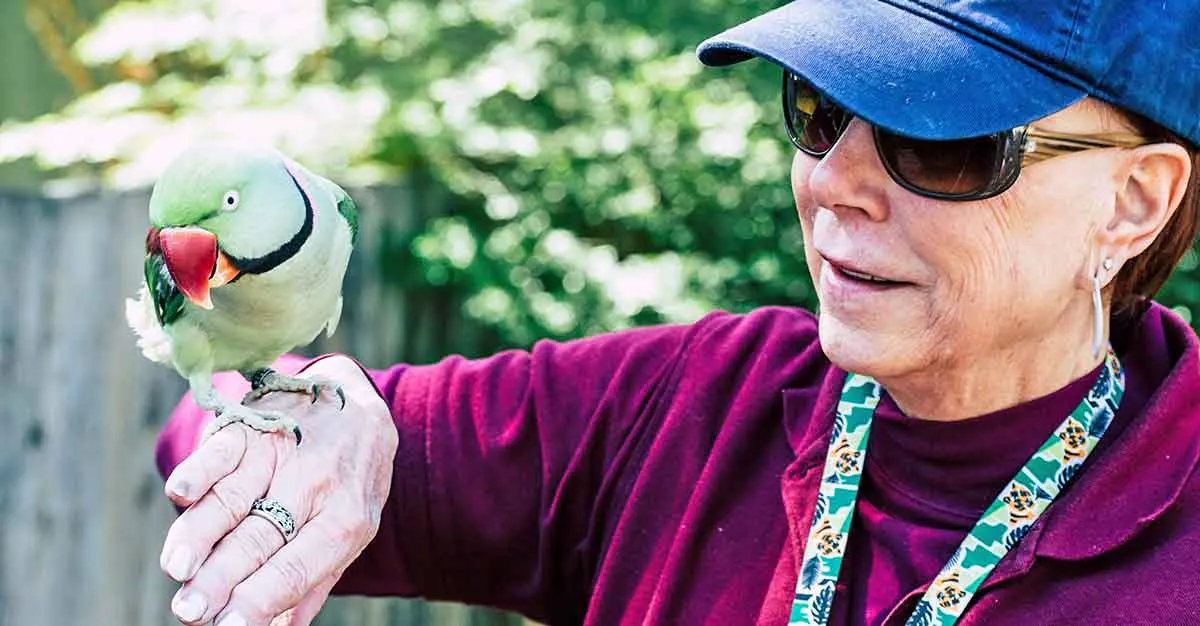
Parrots need to be stimulated throughout the day, and speaking to them with greetings, simple commands, or conversations will do just that. If your bird starts to learn the words of foods, like “apple” or “seed” try to reward them with that specific food. In this way, you are fostering shared experiences with your pet and responding positively when they get the words right. This helps form a two-way communication bond.
Naming items for them to learn and whispering are also great ways to engage them in the learning process. Naming items, such as their toys or different colors, taps into their natural curiosity and adds an interactive element to their vocal development. Whispering, with its quieter tones, often captures their attention, making the learning environment more intimate for your parrot.
A personalized approach not only keeps your feathered friend mentally stimulated but also creates a dynamic atmosphere that encourages their verbal abilities to grow.
Celebrate Victories

Bonding with your parrot as they learn to talk is a rewarding and delightful experience. By understanding your parrot's breed, creating a learning environment, and engaging in consistent repetition, positive reinforcement, and interactive communication, you pave the way for successful vocal training.
Remember, each parrot is unique, and patience is key as you begin this exciting journey. Embrace the joy of shared experiences and celebrate small victories in the bond you build with your talkative pet!


